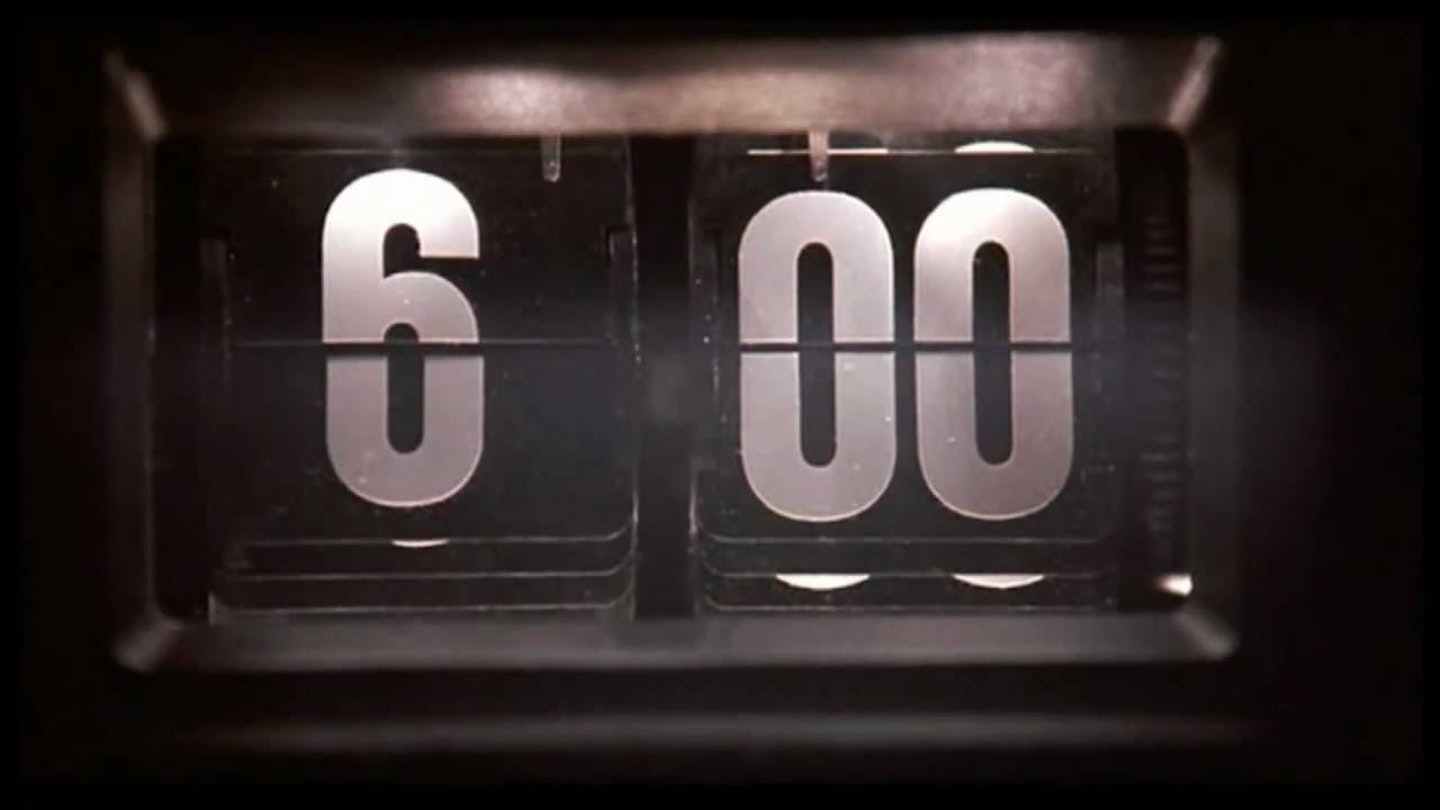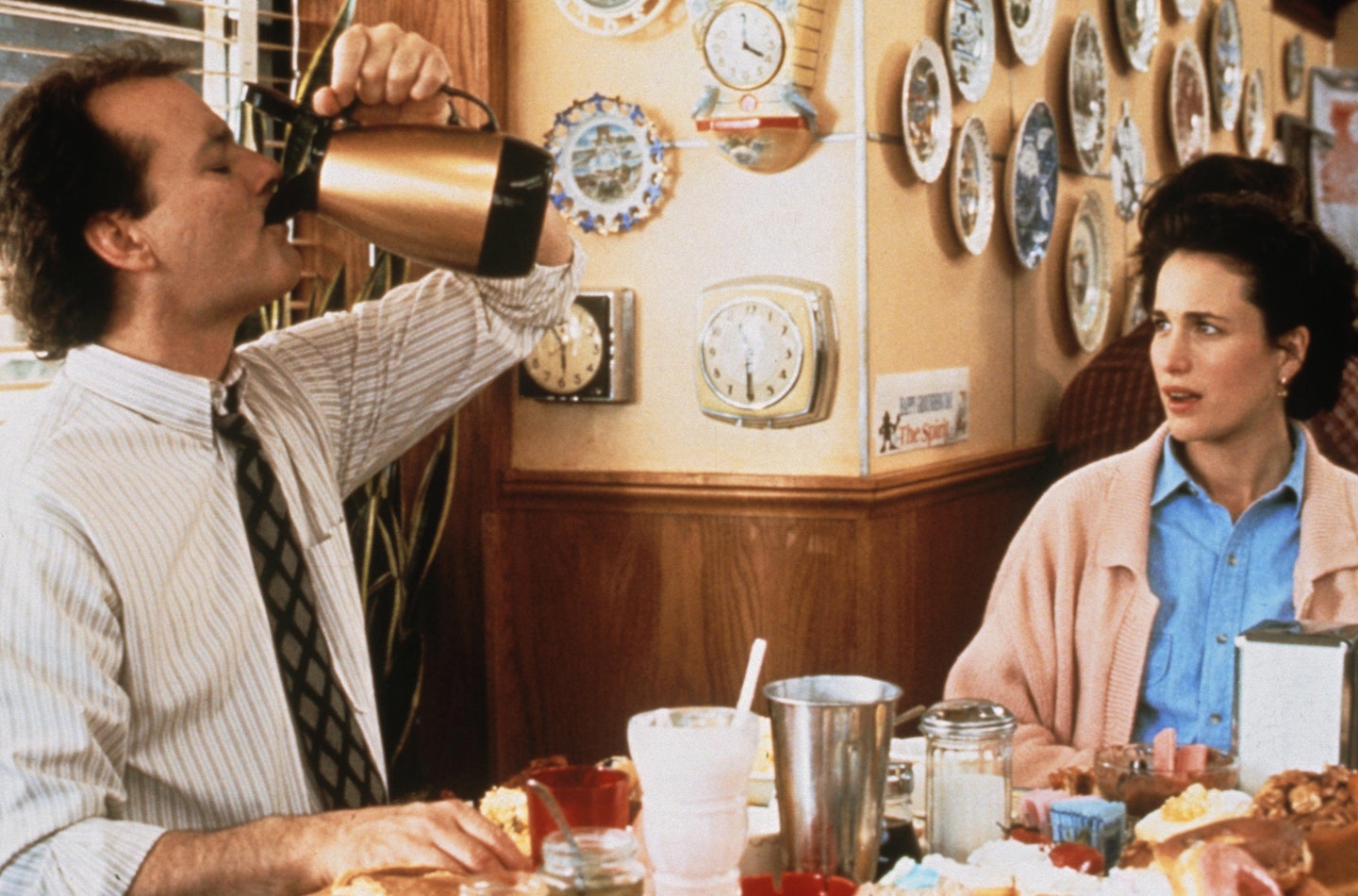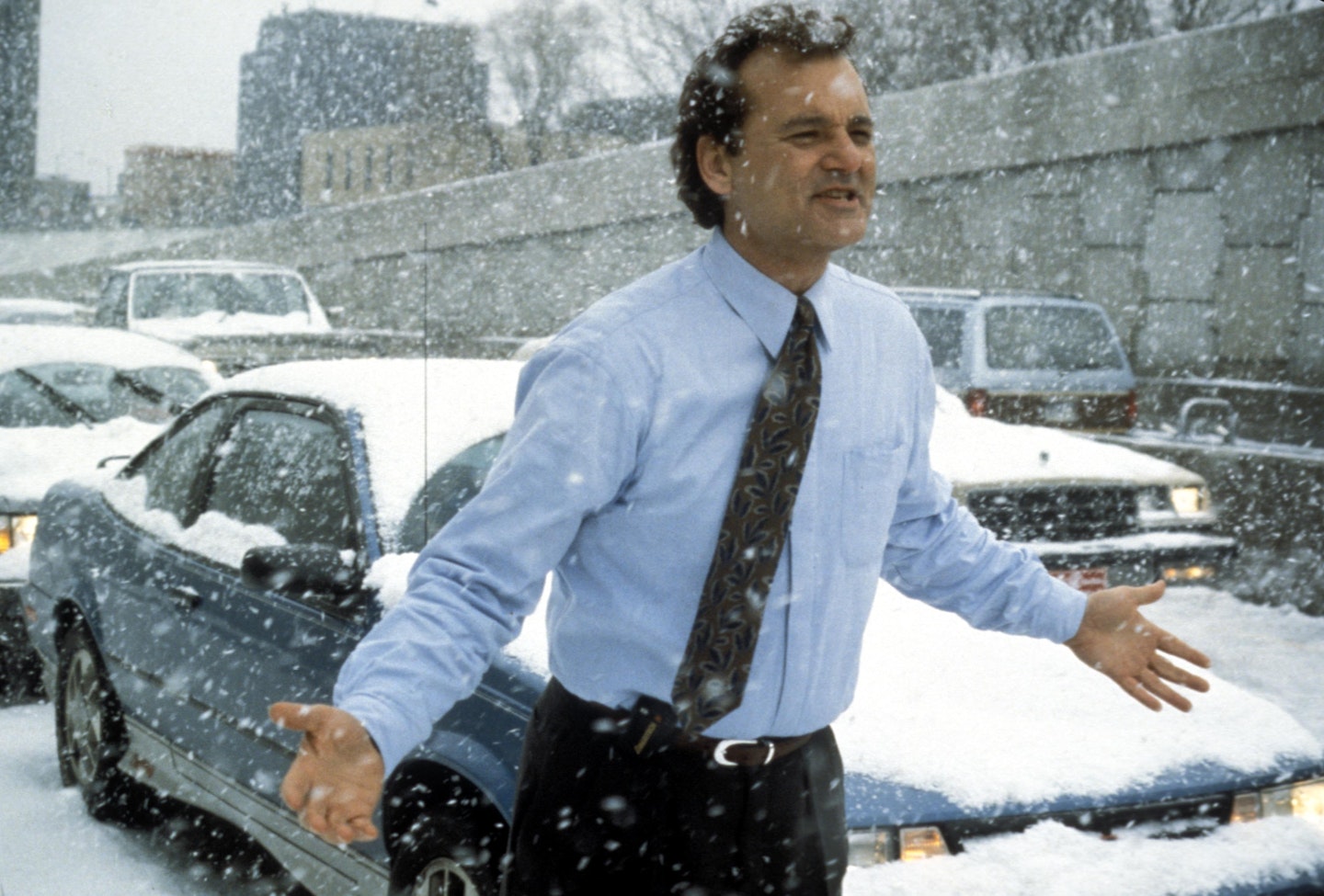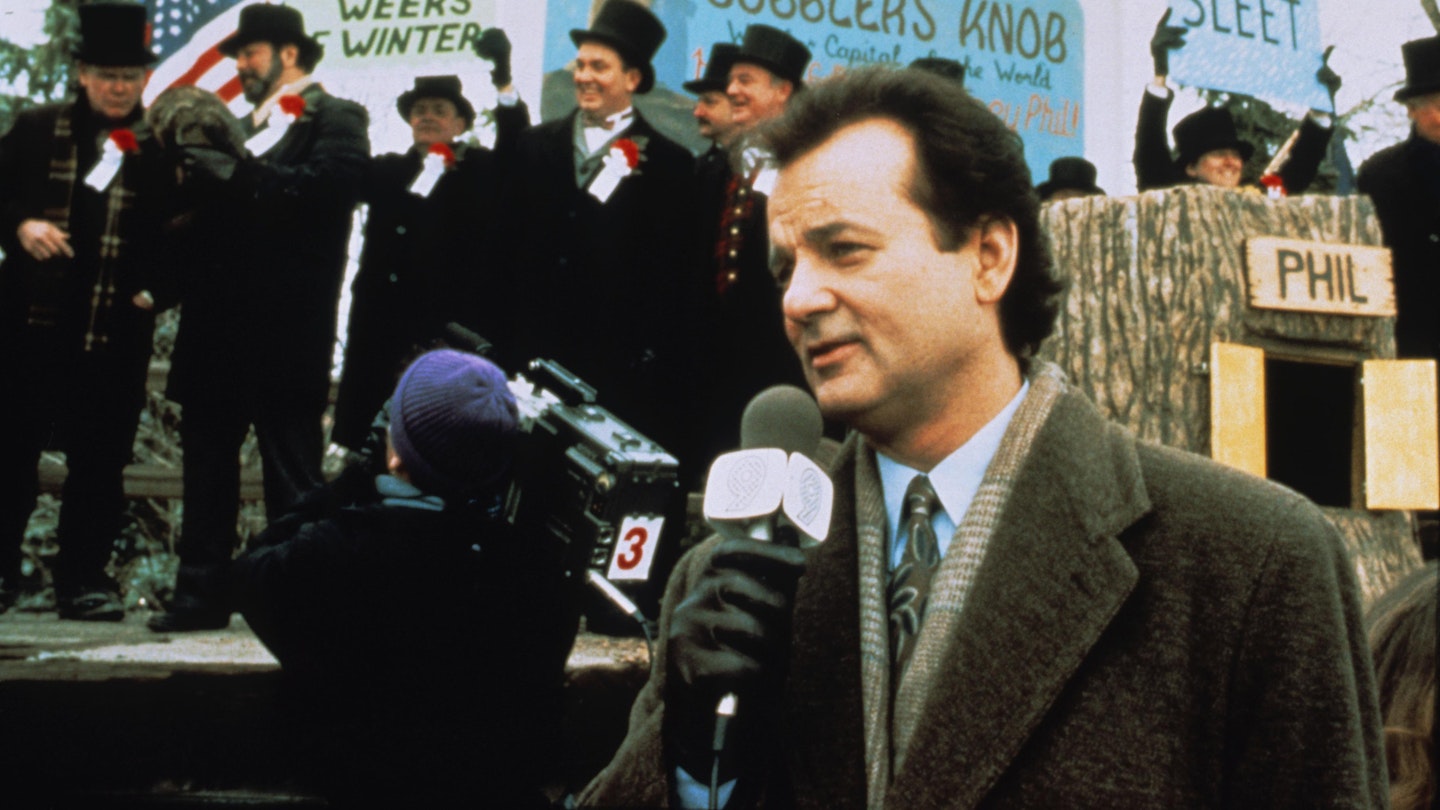This article first appeared in Empire magazine, issue #282 (December 2012).
A man awakens at 6am to the alarm call of local radio station DJs prattling on about the weather. Everything is in its place: the entire lack of hot water, the landlady with a vacancy between her ears, folks gathering at Gobbler's Knob for the Groundhog festivities. Exactly like yesterday. Hold on, this is yesterday. Only today.

There has been a fair amount of dispute over where Groundhog Day's time-trap idea originated. Sci-fi author Richard Lupoff claimed they used his short story, 12:01pm, based around the idea of a man repeating an hour on an endless loop (it was made into a short film and a TV movie) which at least posited a scientific explanation (the hero gets an electrical shock). However, in 1986 Ken Grim wood wrote the award-winning Replay, which has a man repeating whole lifetimes (well, 25 year spans) without any explanation.
Groundhog Day is played expertly for laughs as well as philosophy.
Whatever the source, neither of these stories was exactly funny. And here Ramis and co. jump in. Groundhog Day is played expertly for laughs as well as philosophy, a grand pastiche of "Capraesque" fables (by way of Dickens' Scrooge) with a cynical old sot having to locate his humanity to free himself from the conundrum of endlessly repeating the same day.
That day is February 2nd, in a snowy Punxatawney, Pennsylvania, where asinine TV weatherman Phil Connors (Murray) has been sanctioned for the local ritual of Groundhog Day involving a plump beaver-like rodent predicting how soon spring will hit. Just getting though the ordeal is top of Connors' agenda. However, "next" morning, the identical radio spiel introduces Connors and the audience (but no one else) to the fact it's Feb. 2nd. Again. And the repetition isn't going to stop.
The film is comedically richer in its first half. While coming to terms with his predicament, Connors awakens to the possibilities for exploiting the peculiar time-shifting — worming his way into women's knickers by snaffling info, guzzling junk food with abandon, flouting the law and generally being as big an ass as he can muster (exactly what Murray does best). It's fantasy fulfilment and like any drug has an almighty comedown. Depression hits, especially when his repeated attempts to charm his producer Rita (MacDowell) consistently fail no matter how much groundwork he puts in. So much so, he ends up trying suicide but to no avail — he wakes up again to Sonny And Cher, and the dopey DJs cackling, "It's Groundhog Day!"
Then there is a breakthrough: Connors discovers himself, dedicating himself to heroically righting the same wrongs everyday. And as he never "resets", he accumulates the wisdom and experience of age. There is the vague sense that 100s of years may have passed in this rewind fashion: Connors becomes a virtuoso piano player, an expert ice sculptor, and ultimately the genuine kind of guy that Rita will fall for. Bingo!

That the conceit is never explained is wholly the point. This is cornball metaphysics, Connors must learn the error of his egotistical ways and find compassion and love for his fellow man (God, the God, it seems, is playing a divine prank). Which sounds ghastly in concept but is immediately leavened by the casting of Murray, the master of bone-dry acerbic wit, and even as his stiff facade is worn away by the toil of endless days he doesn't let things descend into the saccharine, just a genuine sense of self-discovery. The skill in maintaining variety is extraordinary, Ramis plays around with pacing, perspective and rhythm while the script presents Connors with a progression of mind-states and purposes which will ultimately shed light on his actual quest while keeping the story invigorated. The film never repeats itself.
That the conceit is never explained is wholly the point.
All the while Ramis is taking a sidelong glance at the filmmaking process itself, the idea of repeated takes altered slightly to improve them without the dramatic purpose being changed. Editing has never seemed so complex is and self-reflexive — as the Groundhog Days wind ever on, we are given increasingly short snippets of their variations right down to a hail of slaps as Connors repeatedly fails to lure his beloved Rita to his bed. While Murray is sublime, taking his world-weary sourpuss delivery to new heights, the really hard work is going on in his supporting cast— they have to literally play Groundhog, enacting each "new" take with as little variation as possible from the previous.
The term "Groundhog Day" has almost entered common usage as a phrase for uncannily repetitive events. The real town of Punxatawney is now a major tourist attraction and Ramis tried his arm at more comedic reality, bending with the lesser cloning-themed flick Multiplicity (1996) starring Michael Keaton.

Of course the movie's remarkable format opens it up to all kinds of bizarre interpretations. You can theorise endlessly on the nature of Connors' predicament: for instance as a metaphor for the growth stages of man (he goes from confusion to belief in his invincibility to learning about mortality to love and fulfilment, with Rita acting as the mother figure). There is also a Buddhist take involving reincarnation and some debate that Ned Ryerson (Tobolowsky's jackass old schoolchum) may also be caught in a time loop.
Satisfactorily, we are left with a note of doubt, Connors hasn't fully recovered — as the lovey-dovey couple elect to stay in Punxatawney and search out a delightful love nest, he nervously states "We'll rent to start..."
